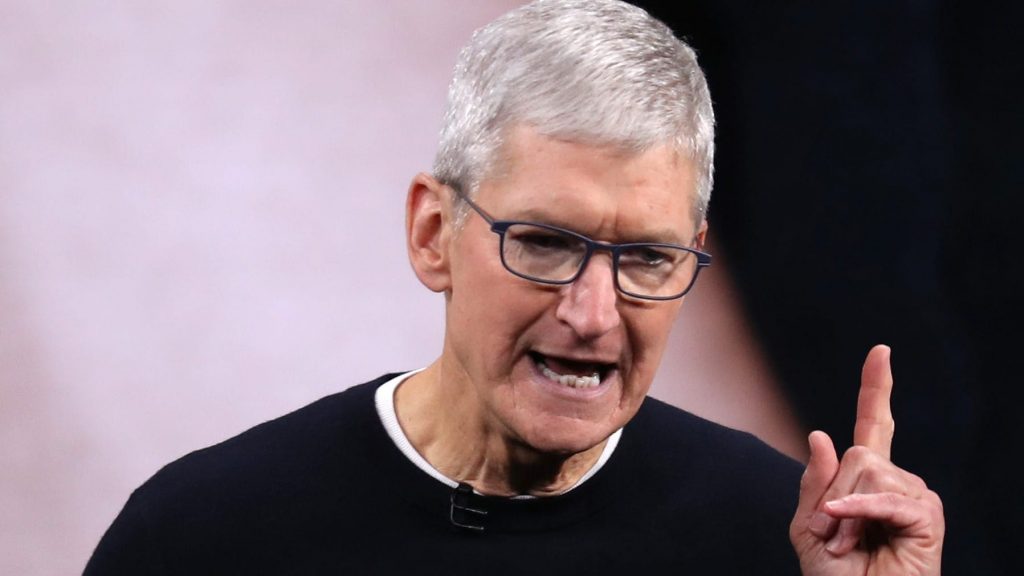- Apple launched a new ad format, Search Tab Ads, earlier this month.
- The ads appear atop the list of “suggested apps” on the App Store search tab.
- Advertisers told Insider that so far the ads are expensive and haven’t delivered meaningful results.
Apple earlier this month launched a new type of ad within the App Store to help developers drive awareness of their apps – but advertisers and mobile ad experts told Insider the new format is expensive and that performance has been underwhelming so far.
Apple’s “search tab campaigns” launched on May 5, just a few days after Apple began rolling out a major privacy update, requiring app owners to get users’ permission in order to track them across other apps and websites.
Early indications have suggested that user opt-in rates for the so-called AppTrackingTransparency pop-ups have been fairly low, making it more difficult for advertisers to precision-target audiences and measure the results of their campaigns. Some experts have predicted that if in-app ads becomes less effective as a result of the privacy changes, advertisers will shift spending to other forms of advertising.
Enter search tab ads.
Apple's pitch to advertisers is that the new ad slot will help them get their apps in front of the "millions" of people who use the App Store's search tab every day. Unlike Apple's existing search ad format, which appear after a user has performed a search and are charged on a "cost-per-tap" basis, the new ad format is charged on a CPM, or cost per thousand impressions model.

So far, CPMs for the new format have been higher than expected and have yet to drive a significant volume of new users to download apps, according to the six mobile advertising experts spoken to for this article. Apple did not respond to requests for comment.
The average CPM for search tab ads was hovering at around $31.10, during the first 10 days of its launch, according to analysis of from SplitMetrics, an app marketing firm. The analysis, which covered 70 advertisers and 5 million App Store impressions, found that ads in the utilities category commanded the highest CPMs, at $49.90, while those in the health and fitness and lifestyle sectors had the lowest CPMs, at $17.20.
As a result, the cost to drive an app-install has also been been expensive, advertisers said.
Thomas Petit, a growth marketing consultant, said in his early testing of Apple's search tab campaigns across more than a dozen apps in a variety of verticals, cost-per installs are 30% to triple-digit percentages higher than Apple's preexisting search ads product.
He said only a single or double-digit proportion of users are installing the apps advertised via search tab campaigns, compared to around a 50% install rate for Apple's other search ads.
"All in all, ROI-wise, this is looking dreadful so far," Petit said of the early metrics and the broad-based targeting required to achieve results.
Apple currently lets advertisers target search tab ads using options including location, age, gender, device type, new users, returning users, or users of the advertisers' other apps.
Redbox Mobile, an app advertising agency, has been testing search tab ads across four clients so far. Like the other ad experts interviewed for this piece, the agency found that CPMs were higher than expected and the tap-through rate for these ads has been low, said Redbox account director Lucy Bennett.
"Search tab ads has potential, but in our view, broader options within the target audience demographics is needed, to increase the audience relevancy and bring down the CPMs," Bennett added.
Ad experts surmised that another reason the placement is so expensive was that the ad itself is so small and advertisers can't customize the imagery and wording. Instead, ads are automatically created using metadata for the App Store. And, unlike Apple's other search ads where a user has signaled their intention to download a certain type of app by searching for a specific keyword, the new ads are, by design, more of an awareness than a "performance" marketing technique that drive a specific action.
"A high CPM in general wouldn't be a problem, but for a really small ad placement, it's not qualified, from my perspective, for branding purposes," said Marian Bucher, senior app growth manager at German e-commerce giant OTTO. "This placement sits between two chairs: it's not really branding and it's not really performance. Either you have to change the pricing or, maybe, the size of the ad."
To be sure, it's early days for search tab ad campaigns and Apple is likely to tweak the product as it evolves. Similarly, it will take time for advertisers to assess whether these new ads had a broader impact on their organic search results and other brand awareness metrics.
"As Apple's algorithm will evolve, we expect that conversion rates will increase significantly with simultaneous decrease of costs," said SplitMetrics CEO Max Kamenkov. "And advertisers themselves will get better at optimizing."
SplitMetrics' analysis also found while the tap-through rate for search tab ads, at 0.91%, had been low versus the preexisting search ads (6.27%) they were comparable to other online ads: Facebook's average tap-through rate was 0.9% in August last year, according to online ad software company WordStream.

